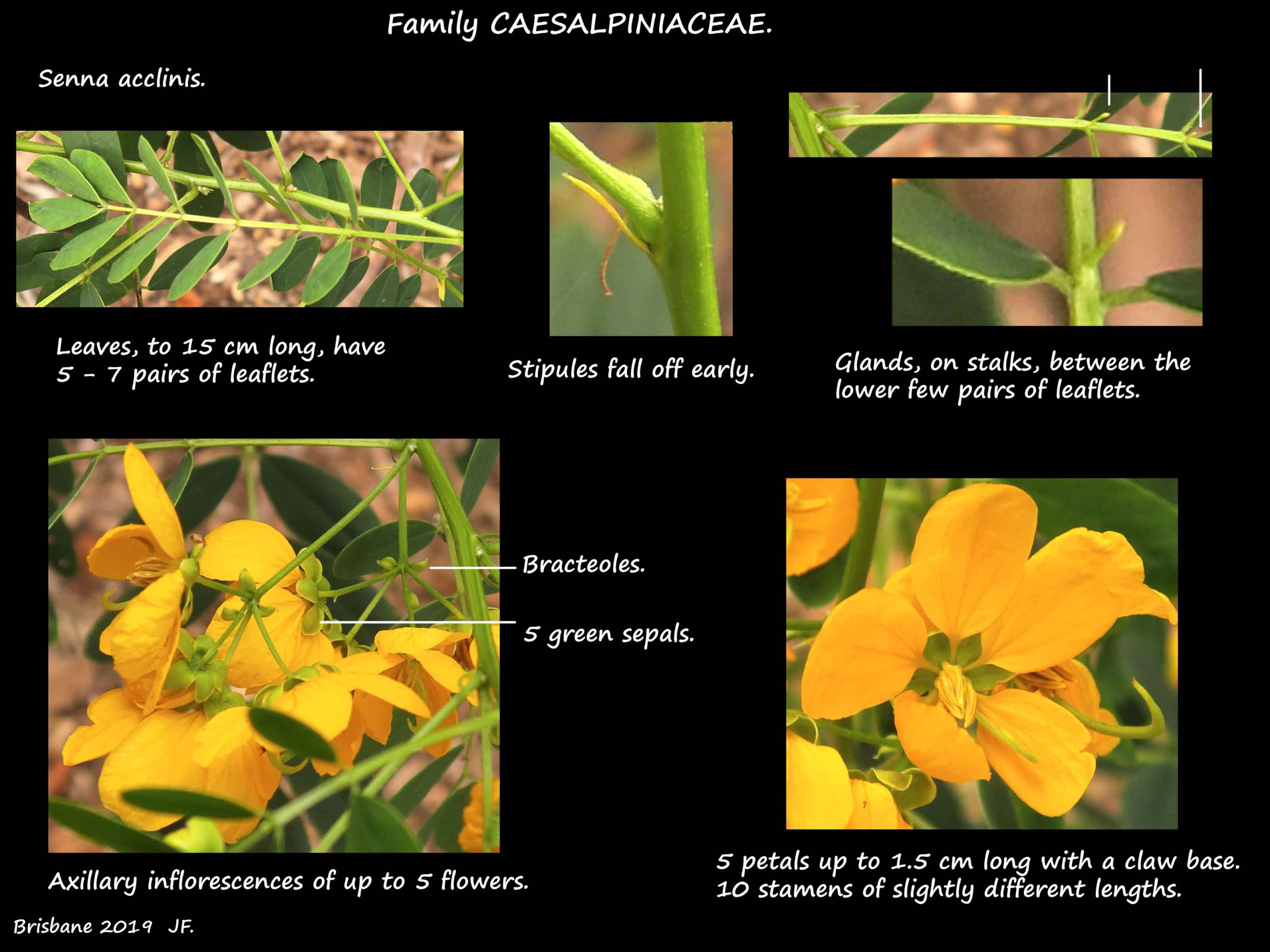Senna acclinis.
Family Caesalpiniaceae (or Fabaceae s.l. > Subfamily Caesalpinioideae).
Edge or Rainforest senna is found in near coastal areas of Queensland.
It was previously Cassia acclinis.
They are shrubs up to around 3 m high.
Parts have no, or a few hairs.
The alternate pinnate leaves are up to 15 cm long.
Leaves are on petioles 2 to 4 cm long and there are narrow stipules that fall off early.
Leaves have around 6 pairs of elliptic leaflets up to 5 cm long and 1.5 cm wide.
The basal ones are shorter than the tip ones.
They can be smooth or slightly hairy.
The midrib extends past the terminal pair of leaflets.
There is an extrafloral nectary between the lowest, or the lower few, pair of leaflets.
The glands are on a stalk.
The axillary inflorescences, with 2 to 5 flowers, are umbel-like.
There is a common stalk or peduncle up to 4 cm long.
At the top of this the flower stalks or pedicels are attached.
The pedicels are about 1 cm long with a bracteole at the base.
The bright yellow flowers have parts in 5’s.
The free, pale green sepals have a yellowish edge.
The petals are up to 1.5 cm long and have a narrow, claw base.
There are 10 fertile stamens of slightly different lengths.
The filaments are only only 1 to 2 mms long.
The anthers, usually also unequal, are 5 to 6 mm long.
The fruit are flattish, curved pods up to 15 cm long and nearly 1 cm wide.
They have numerous shiny seeds.
J.F.


